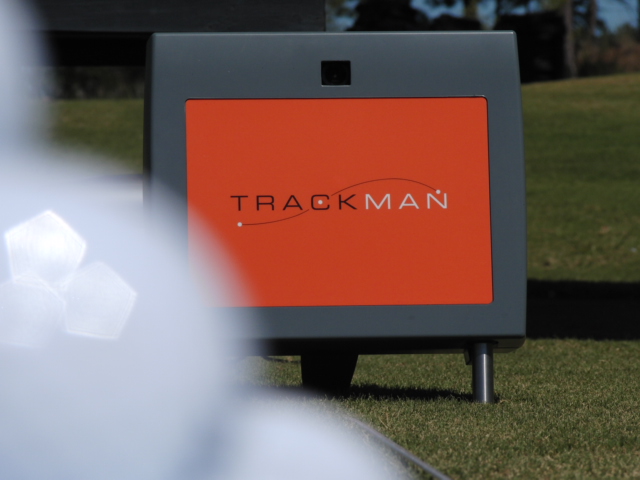It has been an enlightening experience using
TrackMan in almost every lesson for a year now. There are so many widespread 'philosophies' (see:
fallacies) that we, as golfers, have heard so many times we simply accept them to be truth.
TrackMan says - hold on a minute!
Here are a few examples that come to mind:
- You've got to "Release the Club through Impact"
The
collision between club and ball lasts less than
1/2000th of a second and it simply is not possible to "release" or consciously
alter the face angle during that very narrow time frame. The face is what it is by the time impact happens. For example - in 2012, by the time
Bubba Watson teed it up in the Masters, his ball had not been on his clubface in competition for even one second! The only element that can alter the face during impact is an
off center hit and that's far from conscious.
- "Draws Must be Hit with a Closed Clubface"
Or vice versa, fades are hit with an open face. Draws are really good if they start to the right (for righties) - agreed? TrackMan shows that the clubface is primarily responsible for the launch direction of the ball and thus for a good draw the face should be to the right of the target with the clubpath (which primarily causes curve) being further to the right. When that, along with a centered hit occur, voila - we have a lovely push draw! This also dispels the myth that the ball launches in the direction of the swing/clubpath. Clubface (primarily) = launch.
- "That Drive Had Tons of Sidespin..."
The vast majority of balls that are hit in the air have backspin. If a golfball has backspin it cannot possibly also have sidespin. Think about it - two types of spin on one ball at the same time? So what makes it curve? TrackMan shows that all shots that curve do so due to backspin on an axis (spin axis) that is tilted either left or right. Curve is purely caused by backspin that is tilted to one side or another.
- "My Divots Point Left so I Must Be Over the Top"
Because divots ideally occur after the collision between face and ball, the clubpath has a window of opportunity to start arcing back inside the target line. I have seen anything from push fades, to hooks, to push draws from leftward pointing divots. Divots do not tell us as much as we think, because they do not (and should not) occur at the moment of impact.
- "That Ball Faded - I Must Have Cut Across It"
A very important factor in determining shot shape is not only the clubface relative to the clubpath, but also where the ball is struck on the face relative to the sweetspot. For regular golfers off center hits occur on the majority of shots hit. Balls hit off the toe of a club will always have a tendency to draw or fade/slice less and balls hit off the heel will always fade or draw/hook less. Even one dimple on either side of the sweetspot will make a difference. This means it is possible to swing for a draw and hit/strike for a fade.
- "My Instructor Showed Me My Club Path on Video"
Ehhh....no! Trust me on this one - what you see on video is a 2D version of a 3D event and the only way you can accurately know what your real clubpath is to be aware of your attack angle, which with video this is not possible either. On video you will see the direction you are swinging in relative to the target, but there is no way to know your clubpath (which is what creates a good portion of ball flight).
- "Hitting Down Always Leads to More Backspin"
Spin is created by many factors, but a steeply descending blow on its own will not alter spin. When a golfer hits down aggressively they often also reduce the loft on the clubface, and a lesser lofted face will do nothing to increase backspin.
- "Draws Are Much Longer and Spin Less Than Fades"
This is a good one! With everything else kept the same a ball that spins on a left leaning axis has no reason to go further than a ball with a right leaning spin axis. Now, keep in mind it's very difficult to keep everything the same (thus draws tend to be longer), but in a controlled environment both shots go the same distance. Just be aware that a properly struck fade will most often go just as far as its draw side counterpart.
And while it's not a myth, even though PGA Tour golfers average out with a downward attack angle on the driver, TrackMan has more than done it's share to prove how maximum efficiency and distance can be achieved by hitting up with the driver.
Feel free to share your thoughts or questions.....










